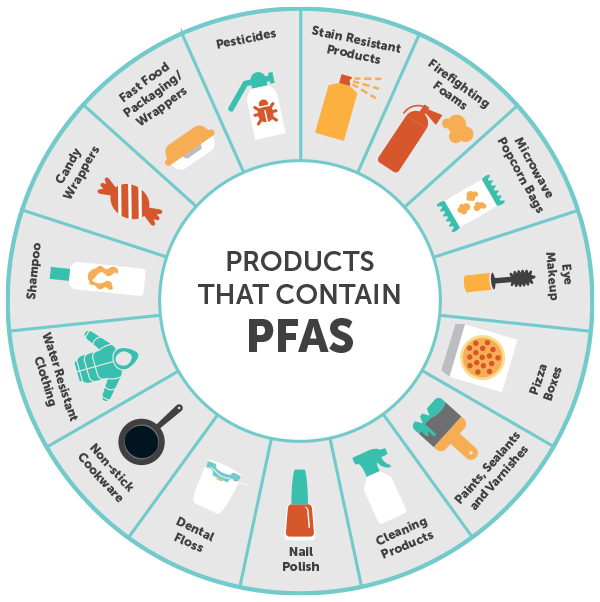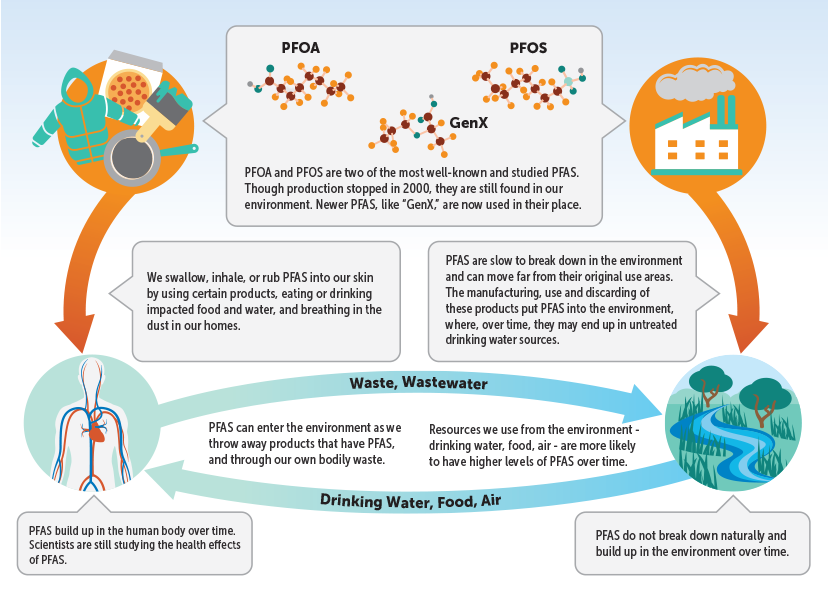Protecting Public Health is Our Top Priority
Orange County Utilities is dedicated to delivering safe and reliable drinking water that meets or exceeds state and federal drinking water regulations.
In 2022, Orange County Utilities’ nationally certified lab performed more than 300,000 analyses while monitoring for more than 150 substances in the drinking water supply, far above the required testing.
Since PFAS, also referred to as forever chemicals, continue to make headlines and are a concern for all communities, we want to help residents understand what it means to them and how they are being addressed by Orange County Utilities.
PFAS EXPLAINED
PFAS, or Per- and Polyfluoroalkyl Substances are a group of man-made chemicals used in a wide range of products due to their water and grease resistance properties. PFAS can be found in products like non-stick cookware, water-resistant clothing, food packaging, and more. They can also enter the air, water, and soil through commercial production processes.
 Source: Water Research Foundation
Source: Water Research Foundation
PFAS are persistent because they last a long time and survive transferring from source to source. You can find out more information about PFAS from the U.S. Environmental Protection Agency (EPA) and the American Water Works Association (AWWA).
 Source: Water Research Foundation
Source: Water Research Foundation
REGULATING
WATER QUALITY:
WHO’S INVOLVED
Drinking water is regulated at both the federal and state levels. On the federal side, the EPA administers the Safe Drinking Water Act that sets national standards for drinking water quality. States are given the authority to enforce federal standards, and may have their own additional regulations that can be more stringent. In Florida, the agency responsible for enforcing drinking water standards is the Florida Department of Environmental Protection (FDEP). This agency works closely with public water systems, providing guidance, conducting inspections, and monitoring compliance to ensure that drinking water is safe for the public.
To ensure safe drinking water standards, every five years the EPA issues a list of unregulated contaminants of concern to be monitored by public water systems. The current Unregulated Contaminant Monitoring Rule (UCMR 5) requires testing for 29 different PFAS contaminants and lithium.
SAFEGUARDING
WATER QUALITY:
ORANGE COUNTY
TAKING ACTION
Ensuring Safe and Reliable Water through UCMR
Orange County Utilities is participating in the EPA’s Fifth Unregulated Contaminant Monitoring Rule (UCMR 5) and will test the drinking water for 29 PFAS compounds at its water supply facilities in 2023 and 2024. This study will use the EPA’s approved analytical methods that can detect PFAS in drinking water.
A Firm Commitment to Complying with the EPA’s Final PFAS Rule
On April 10, 2024, the EPA announced the Final PFAS National Primary Drinking Water Regulation. PFAS can often be found together in water and in varying mixtures. The EPA will regulate five PFAS individually: PFOA, PFOS, PFNA, PFHxS, and HFPO-DA. The EPA will also regulate four PFAS as a mixture: PFHxS, PFNA, HFPO-DA and PFBS. As part of our efforts to continuously improve water quality, we are committed to complying with PFAS regulations using proven water treatment technologies.
Legal Measures to Hold PFAS Producers Accountable
Orange County is participating in a lawsuit against PFAS manufacturers, distributors, and sellers who might have impacted our source water. The purpose of this litigation is to protect residents from the potential costs of removing PFAS from the drinking water. We believe it is important to hold polluters and not the residents of Orange County accountable for any damages.